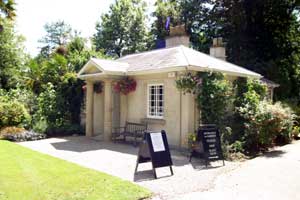 |
||
 |
||
|
||
 |
TRENGWAINTON GARDENS
Magnificent gardens, with views of St. Michael's
Mount, across Mount's Bay
Trengwainton 's location close to the tip of Lands End, where it is protected from the harshness of winter by the warming effects of the Gulf Stream and the southerly aspect, creates a wonderfully mild climate, which experiences very few harsh winters.
The gentle micro-climate of this region, creates the conditions needed to cultivate varieties of shrub, tender and half-hardy trees, plus many other plant species, that cannot be grown in the open anywhere else in England.
The garden in its present format, was started in the early part of the 20th century by Lieutenant Colonel Sir Edward Bolitho, after he inherited the rambling Victorian house and grounds in 1925. The family acquired Trengwainton in 1857 and it is known that a house has been established here since the 16th century.
Early work at Trengwainton was by Rose Price, the son of a wealthy West Indian sugar planter. He established much of the garden's framework during the early 19th century, utilising the gentle slope of a hillside along the course of a small stream.
Price planted a series of tall beech trees and oaks along the line of the stream creating a structure for the garden and giving shelter to the family home; protecting Trengwainton from the westerly gales that cross the region.
Price remodelled the contours of the land, creating terraces, along the south and west facing slopes of the hillside. These slopes receive the full benefit of the sun, enabling early vegetable crops and tender plants to be cultivated. He used brick in the construction of the retaining walls, as it is warmer than the natural local granite. The gardens at Trengwainton are rare survivors of this practice, which was very common during the 19th.
Rose Price created a series of south facing compartments - sheltered from the extremes of the weather by the large flowering trees.
Each compartment has a small lawn, surrounded and borders filled with tender species of shrub and plants including camellias, passionflowers and rhododendrons collected on an expedition to the Himalayas in 1927-8; which Lt. Col. Sir Edward Bolitho partially funded. Close to the house a large specimen of 'Magnolia sargentiana robusta' provided a spectacular display of colour during the spring months. This deciduous magnolia, from the Szechwan Province in China, produces, large, scented mauve-pink and white flowers that are up to 20-30 cm across.
Properties near TRENGWAINTON GARDENS

Self Catering
Traditional Granite Farmhouse -situated between St Ives and Penzance, Sited on a hilly ridge overlooking the whole of Mount's Bay. Former Mine Captain's House close to Poldark Coutry. An Area of Outstanding Natural Beauty, with awesome countryside, coastal and sea views. Parking, Three Bedrooms and Superb sea views. Sleeps 2 to 6 people plus travel cot |
|
 |
|
Promoting
your business on Cornwall Online |
|
Cornwall
Online Website by ITS WEB DESIGN - COL DIRECT. Tel 01579 557343
|